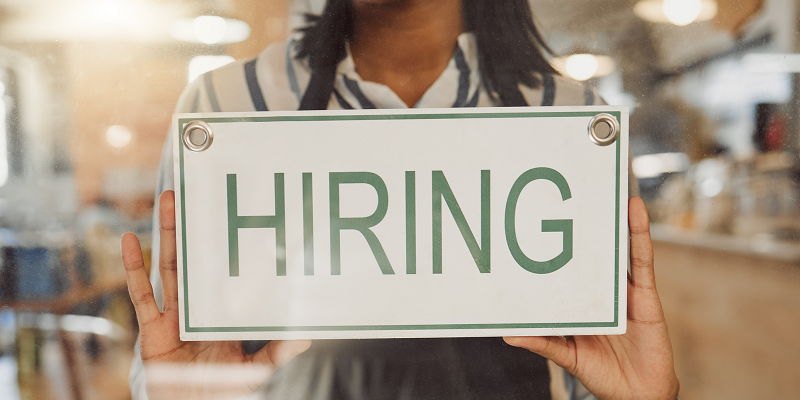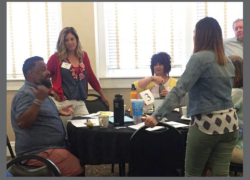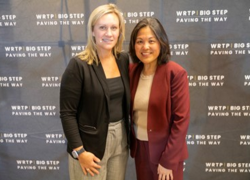
It’s a fact that women, people of color and individuals with disabilities are vastly underrepresented in critical infrastructure fields such as manufacturing and construction. Achieving parity in these and other fields requires intentional investments and partnerships. Building off of what we’ve learned from our work to incorporate diversity, equity, inclusion and accessibility into our programs and outreach, the U.S. Department of Labor is working diligently to ensure that equity is a central part of federal infrastructure investments.
Strengthening the Pipeline to Good Jobs
A diverse and equitable workforce requires thoughtful strategies for recruiting and retaining underserved and underrepresented populations. And successfully implementing these strategies requires clear guidance on best practices as well as dedicated funding and technical assistance. We have worked with other federal agencies to require, preference or encourage these three strategies wherever possible in funding opportunities:
Investing in quality training programs like pre-apprenticeship programs, which are often the on-ramp for historically underserved populations into Registered Apprenticeship programs.
The Women in Apprenticeship & Nontraditional Occupations (WANTO) grant program operated by the Labor Department’s Women’s Bureau funds community-based organizations that provide technical assistance to unions, employers and public sector project owners to increase women's participation in apprenticeship programs and nontraditional occupations, including in the construction trades. For example, WANTO grantee Tradeswomen Inc. provided technical assistance to ValleyBuild in Fresno, California, to launch a women-only cohort as part of their existing pre-apprenticeship training cycles. This helped secure the recent investment of $3 million in state funding to scale this program.
Additionally, the Labor Department’s Office of Disability Employment Policy, through its Partnership on Inclusive Apprenticeship project, drives policies and practices to improve access to inclusive apprenticeships for people with disabilities.
The U.S. Department of Energy has included apprenticeship readiness programs as one tool to “foster improved access to training and jobs for members of the community, including under-represented individuals and those facing barriers to employment” that a funding applicant might identify in their community benefits plan, which must accompany any application for Energy Department funding under the Bipartisan Infrastructure Law.
Providing a variety of wrap-around supportive services to help workers enter and stay in apprenticeship and other training programs.
The technical assistance that Tradeswomen Inc. provided to ValleyBuild also included access to mentoring, support networks and other non-financial supports, all of which are critical to the long-term success of underserved populations in the trades, especially when paired with financial supports such as stipends, child care (including outside of standard working hours), transportation, emergency cash assistance, and funds for tools and equipment. The Department of Transportation has identified the provision of supportive services as critical to helping people “facing systemic barriers to employment participate and thrive in training, apprenticeship, and employment,” and issued guidance on how state highway formula funds can be used for these kinds of services.
Incorporating respectful workplaces training helps create and maintain safe, inclusive, and productive workplaces for everyone.
Programs like RISE Up and Be That One Guy provide tools to ensure workers from all backgrounds feel supported on the job. The Department of Commerce has encouraged applicants for broadband funding to “[c]ultivate a supportive working environment” as it “promotes retention of employees from underrepresented and historically disadvantaged groups.
All of our work at the Labor Department has affirmed that DEIA requires intentional investments and partnerships. It takes time, commitment, and – most importantly – dedicated funding.
This blog series was a collaborative effort by the Good Jobs Initiative, Women's Bureau, and the Office of Federal Contracting Compliance Programs. A special thanks to the Office of Disability Employment Policy, the Employment and Training Administration, and the Veterans’ Employment and Training Service.
Editor’s note: This blog post is part of a series on the Good Jobs Initiative. Read the other posts here:
- Leveraging Federal Dollars to Create Good Jobs
- There’s No One-Size-Fits-All Approach to Advancing Job Quality and Equity
- Creating More Equitable Pathways to Good Jobs
- Data is the Cornerstone of an Equitable Jobs Strategy
Building an Equitable Workforce Requires Partnerships at Every Level
This document contains links to information created and maintained by other public and private organizations. Please be aware that the U.S. Department of Labor does not control or guarantee the accuracy, relevance, timeliness, or completeness of this outside information. Further, the inclusion of links to particular items is not intended to reflect their importance, nor is it intended to endorse any views expressed or products or services offered by the author of the reference or the organization operating the site on which the reference is maintained.

 U.S. Department of Labor Blog
U.S. Department of Labor Blog

